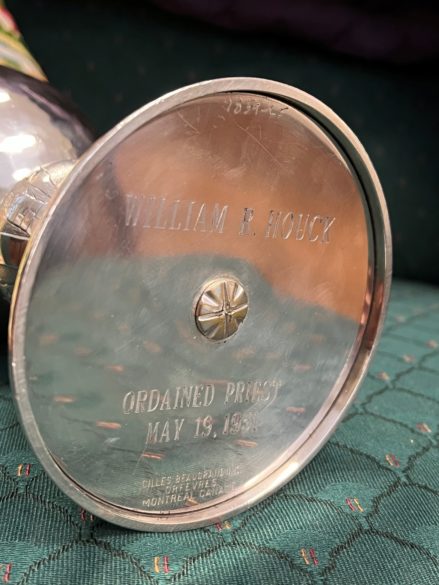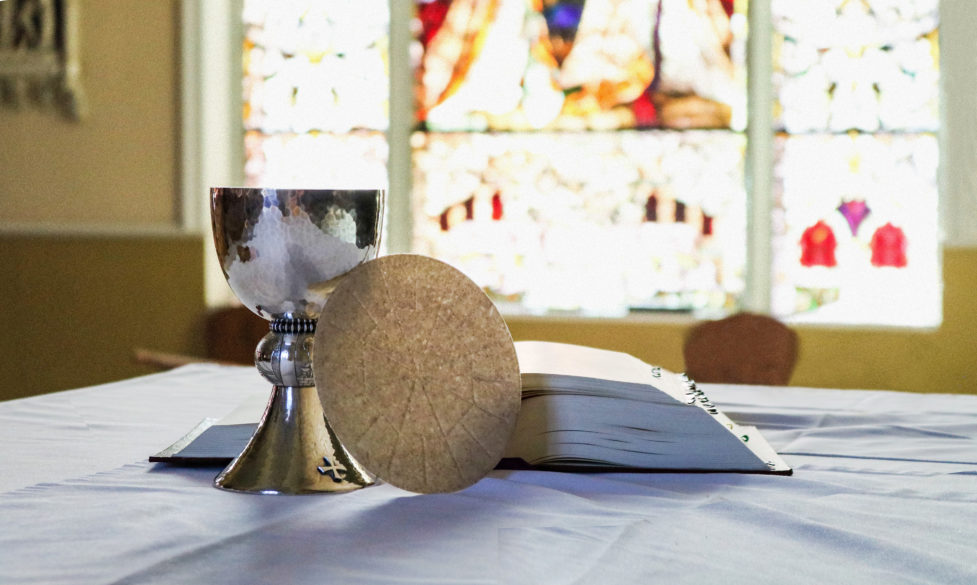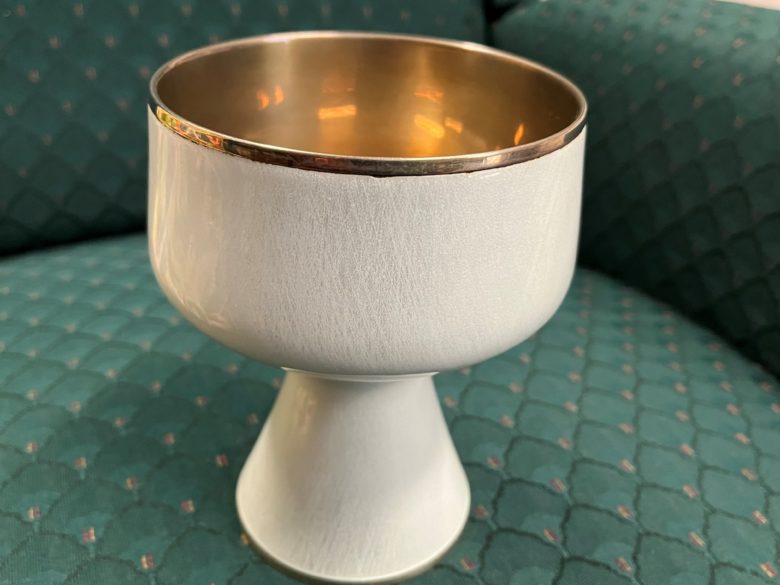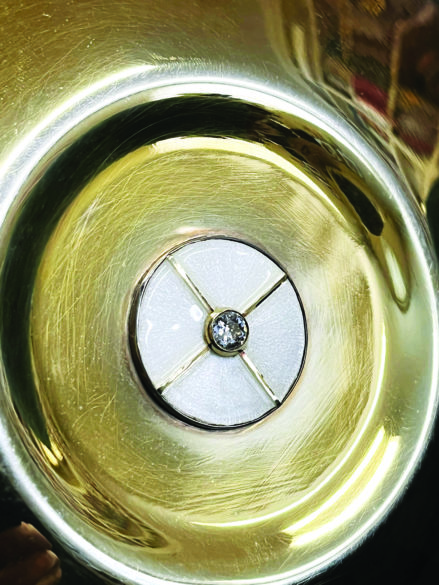From the Archives
By Mary Woodward
JACKSON – The image chosen for this year’s Catholic Service Appeal has special meaning from an archives perspective. The chalice and Roman Missal belonged to Bishop William R. Houck and Bishop Joseph N. Latino respectively.
Bishops’ chalices, rings, pectoral crosses and other episcopal accoutrement belong to what is called the patrimony of the diocese and are kept as part of the diocesan archives collection as spiritual gifts to the church.
Bishop Houck’s chalice was made by the Gilles Beaugrand Goldsmiths Company in Montreal, Canada in 1951 for his ordination on May 19 of that year. It is a simple, elegant, styled chalice with a hammered finish. The inscription on the bottom of the chalice has his name and date of ordination.
The central knob has images of Abraham preparing to sacrifice Isaac and then replacing him with the lamb on an altar. Another image is Jesus offering the Last Supper juxtaposed to an image of the breast of the Lamb of God pierced and pouring blood into the chalice. It is beautiful when held in the hand and examined closely.
Having worked with Bishop Houck closely, I can see why he would have chosen this style and imagery. He was viewed as larger than life by many, but ultimately, he was a priest and churchman who placed his heart on the altar during the Liturgy so that it could be swept up into the heart of God in the Sacred Mysteries.
Bishop Latino’s chapel missal lies open on the cathedral altar next to the chalice in the CSA image, which is how it always lay on his altar in his chapel at his residence in Jackson. He kept his beloved chalice and paten on his home altar as well.
Fashioned in cross-hatched white enamel. Bishop Latino’s chalice was created by the famous Swiss chalice maker, Meinrad Burch in 1963. It was consecrated by Archbishop John P. Cody in New Orleans a few days before Cody ordained then Joseph Latino a priest for the archdiocese.
Bishop Latino’s cousins Joseph and Josephine Riccobono gave him the chalice along with the paten, which contains Josephine’s diamond from her wedding ring. In the early 1960’s, Burch was sought after for his unique chalice work. Bishop Latino shared with me the story of the diamond placement in the paten.
Burch initially told the young Latino that he did not put “headlights” on chalices, referring to the desire to have the diamond on the actual chalice. This left the young ordinand crest fallen. A few days later, Burch sent word that he would however be happy to include the stone underneath the paten and all was well in the Latino household again.
Once again, the style of the chalice and its origin fit the man. Bishop Latino loved his Sicilian, New Orleans family and all that went with that, but he loved the Lord more than anything and cherished every opportunity he had to celebrate the Sacred Mysteries on the altar of the Lord. It is fitting that the last Mass he celebrated on earth was on the 58th anniversary of his ordination – elevating his chalice and paten as he poured his heart into God’s heart.
This year our diocese is intensely “reflecting, remembering and renewing” our love of the Holy Eucharist as we make our way slowly through this pandemic. The elements used in the CSA image and this year’s CSA theme of “Hope Rising” offer a beautiful image of the lives of our most recently deceased bishops and how dedicated they were to participate in the Sacred Mysteries as priests of God. Each time I see the image I remember their dedication and unending love for the Eucharist and being able to offer it to God’s people. I offer a prayer for them both and soak in the many memories of assisting at Mass with them.
This year as you consider your CSA pledge take a moment to reflect on, remember and renew your love of the Holy Eucharist as the source and summit of your faith and our faith. It is our foretaste of Heaven.
(Mary Woodward is Chancellor and Archivist for the Diocese of Jackson)




